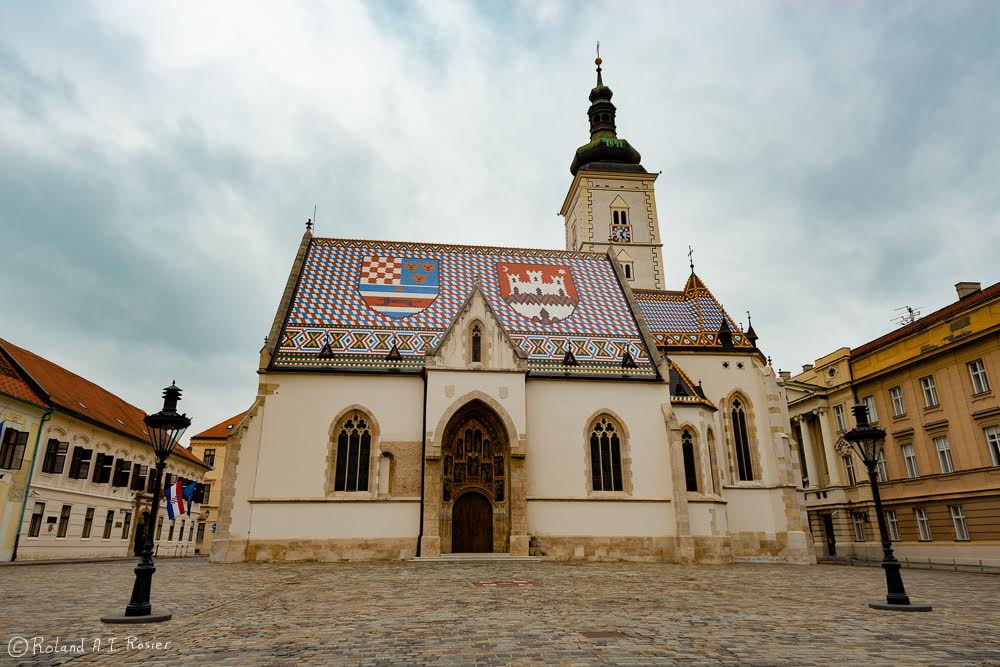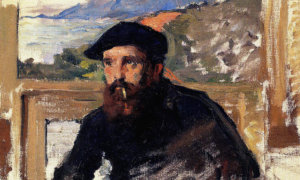Zagreb is the capital city of Croatia. But for me, it’s the city that was once my home; the city where I learned to dance.
It’s the city that marks noon with a canon!
I came to live in Croatia in the early 90’s after managing to escape from the besieged city of Sarajevo in neighbouring Bosnia during the Homeland War.
I was not wearing tourist spectacles at the time. Croatia was just a place where I happened to have family.
My introduction to the history of Zagreb came through reading novels by Marija Jurić Zagorka, one of the most beloved Croatian authors and certainly my favourite.
In her “Secrets of the Bloody Bridge“ (Tajne krvavog mosta), events are based on the dark past between the neigbouring settlements Gradec and Kaptol, in the Upper Town. The bridge, after which the novel was named, was destroyed in 1899 and the stream Medveščak that it crossed was since redirected to allow for the introduction of modern canalisation.
However the name, Krvavi Most, still lives … a short street connecting Taklčićevu i Radićevu street, not far from the Cathedral on Kaptol.
It is on route between the Main City Square (Trg Bana Josipa Jelačića) via the Stone Gate (Kamenita vrata) to St. Mark’s church.
This historic area is definitely a must see when in Zagreb. I would direct anyone visiting to start at Jelačić Square. There is a tourist information office where you can get a free map of the city and information on any current events. Most locals will naturally also gravitate towards the Jelačić Square as their main meeting point, at the clock. They also start the day with a strong coffee but that is optional.

JELAČIĆ SQUARE, ZAGREB’S MAIN SQUARE © Roland A.I. Rosier
This city is full of sculptures, from my dear Zagorka on Tkalčićeva street, AG Matoš on Strossmayer promenade to Nikola Tesla in Masarykova street and the Well of Life in front of the National Theatre.
The latter two are by Ivan Meštrović, the internationally renowned Croatian sculptor whose other works can be seen at his studio gallery on Mletačka Street. At Jelačić square itself there is the statue of Count Jelačić and the Manduševac fountain which lies at the heart of the legend of how Zagreb got its name.
As legends go, there are variations but this one is my favourite:
Once upon a time, an unknown brave man set out into the world to find his fortunes. One day, at sunrise, he finds himself in, then barren,a valley on the south slopes of Medvednica mountain. He collapsed from thirst and exhaustion when a beautiful maiden appeared before him and asked him for his wishes. He said he had no wishes but for water to revive him to which she replied that she has no water, the fields are dry but that he should scrape (“zagrebi” in Croatian) the dirt where he fell, which he did and a clear stream formed before him. He drank the water and asked the maiden for her name. She said her name was Manda and that she was an orphan. He instantly asked her to marry him promising her a new life and as she accepted, the land around them became fertile.

VIEW FROM THE ZAGREB 360º Observation Deck © Roland A.I. Rosier
The fountain was named Manduševac. Across the tram track there is Zagreb 360º, the observation deck which, from its 16th floor, provides lovely views of the City, especially the Upper Town.
ZAGREB FINICULAR
My preferred way to reach the upper town is by the Zagreb Funicular, from the main shopping street Ilica in lower town. The exit is right next to Lotrscak Tower, which houses the Gric canon which has been used, almost continuously, since 1877, to mark midday. The Funicular is operated by the same company who runs the City trams which means that if you buy the daily tram ticket, it covers the use of the Funicular .
STROSSMARTRE
Also next to the Funicular is the entrance to Strossmartre. The Strossmayer promenade which is undoubtedly the most romantic promenade in Zagreb also offering stunning views of the City, especially the Zagreb Cathedral. Zagreb City organise a range of events there from Summer on the Stross, this year from 30 May to 30 September to Advent on Stross, from 30 November to 7 January.
The Christmas market – a lot, lot bigger event and covering many other areas of Zagreb – has been voted as the best European Christmas market By Best European Destinations for the past three years.
A few minutes away from Lotrščak Tower, at the St Catherine’s Square, there is a beautiful baroque church St. Catherine of Alexandria (Sveta Katarina Aleksandrijska) which is well worth a visit.
ST. MARK’S SQUARE
Continue via Ćirilometodsku street, past the Museum of Broken Relationships and past the Old City Hall on which there is a plaque depicting a relief of Nikola Tesla to St. Mark’s Square and St. Mark’s church.

ST. MARK’S CHURCH© Roland A.I. Rosier
This is a must-see landmark in Zagreb and probably in the whole of Croatia, dating back to the 13th century. The church is most famous for its roof tiles depicting the medieval coat of arms of Croatia, Dalmatia and Slavonia on the left and the coat of arms of Zagreb on the right.
If you are in Zagreb between late April and October, the Changing of the Arms ceremony with the Cravat Regiment takes place every day at noon.
ZAGREB CATHEDRAL
No visit to the upper town is complete without seeing the majestic Zagreb Cathedral, Cathedral of the assumption of the blessed virgin Mary, the church that became a Cathedral in 1093.
The Cathedral boasts one of the ten finest organs in the world. During summer the Cathedral hosts an organ festival. I have heard the instrument during the Midnight Christmas Mass; it’s a special memory.

Other favourite places in the City Centre include Park Zrinjevac, in the lower town, a few minutes walk from the Ban Jelačiċ Square. Park Zrinjevac hosts various free events throughout the year including dance evenings at the Bandstand and various art installation organised as part of international street festival Cest d’best.
Each year, my friend Ivana, an art teacher at the Primary School Novi Marof, takes part in their Pastel the Pavement initiative, where the streets are transformed into artworks.
NEAR ZAGREB
Outside of the main City, my personal oasis of peace is Lake Jarun. To get there from the main square, it takes about 35 min on Tram No. 17, Prečko direction, to tram stop Staglišće.
• Lake Jarun, otherwise known as Zagreb’s Sea, is man made and comprises of two lakes and six islands. It’s a lovely place to go for a walk and, if you are taking children, there is a great playpark close to St. Tropez caffe bar, on the south side of the lake, past the rowing club.
• Alternatively, head for the beach on the “Little Lake Jarun”, which is studded with eateries.
• If you are a devoted clubber, the Aquarius night club is definitely the place to visit; this used to be my local hangout.
• Jarun lake is also home to InMusic, a large open air festival.
• Another alternative for a lovely scenic views over the entire City of Zagreb is to go to Sljeme and visit Medvedgrad (but not in 2019 as it is closed for renovation), a medieval town, on the mountain above Zagreb, Medvednica (Bear mountain – with no present day bears). Learn about the legend of the black queen, the first of the European vampires.

–
BEAR MOUNTAIN (Photo by Roland A. I. Rosier)
Souvenirs:
I am not usually the person who buys souvenirs. But in case not everyone knows this already, the modern day tie originated from a neck tie worn by the 17th century military unit, the Croats. The French, at the court of Louis XIV, spotted it, liked it and “la cravate” was born.
At Croata you can buy high quality ties and scarves with unique designs – my husband has few with the old Croatian glagolitic script.
Another symbolic souvenir from the region is the Licitar heart, a heart-shaped gingerbread which, though edible, is not really designed for eating but rather an ornamental gift.
Licitar is part of the Croatian cultural heritage and it is fascinating to watch it being created.
Let’s eat:
Having paid respect at the churches and historic sights, I would – via Stone street (Kamenita ulica) and the Stone Gate – typically head to Tkalčićeva Street, past the statue of my dear Zagorka for refreshments at one of the numerous cafes.
Or go to La Štruk for traditional Zagorski Štrukli: pastry boiled or baked with either sweet or savoury fillings freshly made to order. At this point, imagine freshly made, very rich, super yummy soft cheese lasagna. This dish is part of the cultural heritage of Zagreb and northern Croatia (Zagorje).
Accommodations:
Zagreb has hotels that suit most budgets and tastes. My personal favourite is in the neigbourhood of my home in Zagreb. Hotel Jarun is clean, modern, easy to reach by car or public transport. The reception is 24hours.
It offers car parking and is a couple of minutes walk from the nearest tram stop.
Getting there:
We tend to drive, it is easy enough and with so many great places to stop by in Austria and Slovenia.
For a short visit Zagreb Airport is only 30 min drive from the City Centre. There is a regular bus shuttle service into the City. Once in Zagreb, it is easy to get around by public transport. For tram and bus timetable check the official transport operator ZET.
 About the author:
About the author:
Lilly Rosier is business analyst, fine-arts lover, baker, wife and a mother who lives near Eindhoven, Netherlands
She’s passionate about travelling and always discovering new, great tasting vegetarian or vegan food.
Lilly’s secret to a happy life: “Spending time with a cat.”














